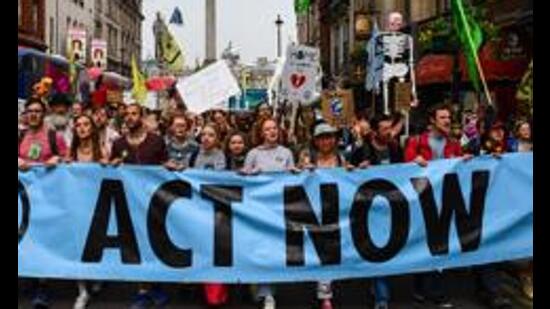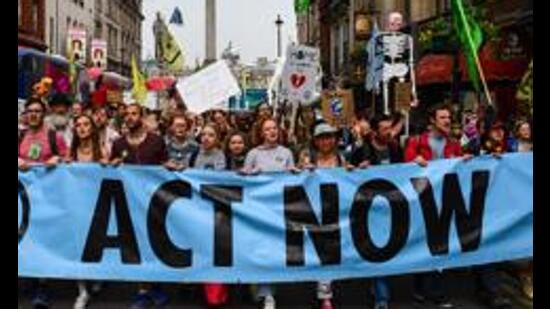Our Terms & Conditions | Our Privacy Policy
Focus on vehicle efficiency to reduce GHG emissions
Sustainable transportation is a key aspect of reducing global carbon emissions to stem the climate crisis. The avoid, shift, improve, and fuel (ASIF) framework outlines a comprehensive approach to creating more sustainable transport systems. While much attention is given to alternative fuel technologies, particularly electric vehicles (EVs), the efficiency improvement strategy remains one of the least discussed but highly effective levers of sustainable transportation. This strategy, however, often gets overshadowed by the excitement surrounding new fuel technologies. While all other strategies, such as modal shift from private to public transport or road to rail transport, are important, efficiency improvement is a crucial yet under-appreciated policy lever.
 The growing popularity of SUVs, which tend to be larger and heavier, only exacerbates the challenge of reducing emissions (Bloomberg)
The growing popularity of SUVs, which tend to be larger and heavier, only exacerbates the challenge of reducing emissions (Bloomberg)
Efficiency improvement is typically a technical issue dealt with at the vehicle manufacturing and regulatory levels, but it is an area often overlooked in public discourse on sustainable transportation. A prime example of this is the Corporate Average Fuel Efficiency (CAFE) standards, which regulate the fuel efficiency of vehicles in terms of grams of carbon dioxide emitted per km. The Bureau of Energy Efficiency (BEE) in India has set strict fuel efficiency targets for the four-wheeler passenger vehicles segment (M1 category).
Though the second phase of CAFE norms were rolled out for M1 in 2023, no such norms have been mandated for other categories of passenger and commercial vehicles. In case of heavy-duty vehicles (HDVs), a constant-speed fuel economy norm was rolled out in April 2023. Shifting to CAFE norms for HDVs can make manufacturers focus on high efficiency vehicles. This provides immediate and impactful results.
As part of the regulations, both globally as well as domestically, lab-based test cycles are moving closer towards real-world driving cycles, called Worldwide Harmonised Light Vehicle Test Procedure (WLTP). The WLTP is considered closer to real-world driving conditions as compared to the earlier testing cycle, such as the Modified Indian Driving Cycle (MIDC), which was criticised for being far removed from on-road realities of driving behaviour or environment.
Under the CAFE norms, manufacturers must meet corporate-level efficiency targets. This means that the average emissions from all the vehicles a manufacturer sells must be below the target set by the regulator. To help companies meet these targets, the regulator offers options like super credits for efficient models like EVs and hybrid EVs (HEVs), which offers flexibility to manufacturers to sell more electric or hybrid vehicles to offset sales of heavy, less efficient vehicles.
India’s regulatory framework is in line with global norms but suffers some lag. In 2027, Phase III of the CAFE norm is proposed to be mandated for implementation, setting even stricter standards for vehicle efficiency. The phased implementation of these norms allows vehicle manufacturers’ time to adapt their designs, engineering, and portfolio to meet the upcoming targets. Penalties for non-compliance, based on the Energy Conservation (Amendment) Act 2022, remain substantial.
When we look at the European Union’s CAFE targets, we see a similar trajectory. From 2020 to 2024, the target for passenger vehicles was 95 grams of CO2 per km (under the New European Driving Cycle), and for 2025-2029, the target is 93.6 grams of CO2 per km. More ambitious targets are set for 2030-2034 (49.5 grams of CO2 per km), based on the WLTP. These targets reflect the global trend toward stricter emissions regulations and underscore the importance of efficiency improvement in the transport sector.
As car sales continue to grow in India, the need for efficiency improvement becomes even more pressing. The growing popularity of SUVs, which tend to be larger and heavier, only exacerbates the challenge of reducing emissions. With rising car ownership and increasing fuel demand, India faces both environmental and economic challenges, with extremely high import dependency of 88% for fuel and the associated pressure on foreign exchange.
Improving the efficiency of vehicles on the road, regardless of whether they run on fossil fuels, hybrid systems, or electricity, provides an immediate and effective solution to reducing emissions. Given that India has a long way to go before achieving high levels of EV penetration, which is currently just about 2.5% of total sales, focusing on efficiency improvement in the existing fleet could yield significant benefits in terms of reduced fuel consumption and emissions in the medium to long-term. Moreover, increased efficiency would reduce India’s reliance on imported oil, helping to curb the nation’s trade deficit and energy security.
Sharif Qamar is associate director, and IV Rao is distinguished fellow, The Energy and Resources Institute (TERI). The views expressed are personal
[ad_1]
Images are for reference only.Images and contents gathered automatic from google or 3rd party sources.All rights on the images and contents are with their legal original owners.
[ad_2]



Comments are closed.